9 reasons to visit northern Japan
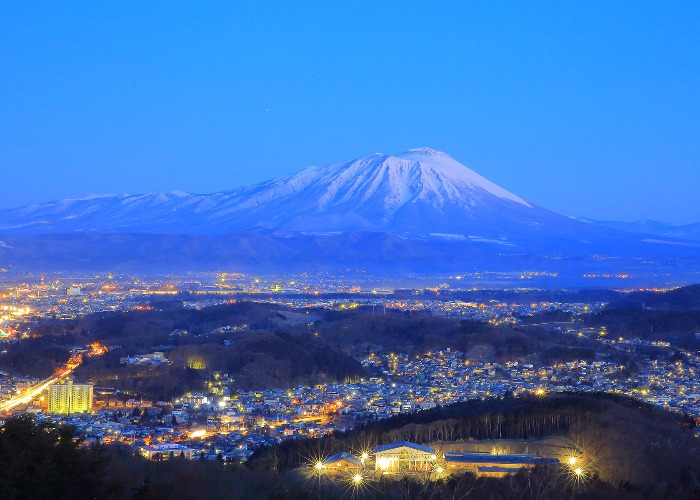
Venture beyond the tourist trails of Tokyo and Kyoto and discover bubbling onsens, crowd-free cities and wild summer festivals in Japan's north east.
While Tokyo’s collage of neon signs and Kyoto’s elegant machiya-lined streets will live up to all your expectations, you’ll be sharing them with a lot of other tourists. If you want to get away from the crowds, to see buzzing cities, forested mountains, lavish golden temples and dramatic cliffs, then head north.
The vast expanse of the Tōhoku region – the northern half of the largest Japanese island, Honshū – is left off most travellers’ itineraries. But it’s a rewarding area to visit, not only because of its natural beauty and cultural riches, but because parts of the region are still struggling to boost visitor numbers after the 2011 earthquake and tsunami. Though rebuilding was swift, drawing visitors back is taking longer, and spending your yen at local businesses can help shift the narrative about this truly beautiful and welcoming part of Japan.
READ MORE: From coffee to cats, discover what to see and do in Tokyo with our full guide
1. It’s dotted with sulphurous hot springs
The mountainous belt of land snaking up the centre of Honshū is home to many hot springs, and over the centuries towns and resorts have grown up around them. Zaō is one of the biggest, with its star bath – the inventively named Dai-rotemburo, or “big outdoor bath” – able to comfortably accommodate dozens of people at once.
Nyūto Onsen is a quieter affair, made up of a several distinct hot springs and their accompanying ryokan set along a winding mountain road. Ginzan Onsen is different again, its ryokan clustered around one stretch of river, atmospherically lit with gas lamps in the evenings.
2. The summer festivals are wild
Tōhoku enjoys slightly cooler temperatures than much of Japan, making it a great choice if you’re travelling in hot, humid July and August. As an added bonus, the summer festivals here are some of the country’s best.
In the first week of August, Aomori and Hirosaki hold the Nebuta and Neputa matsuri (festivals), in which crowds of people dance jubilantly through the streets to rhythmic drumming with enormous, handmade paper lanterns.
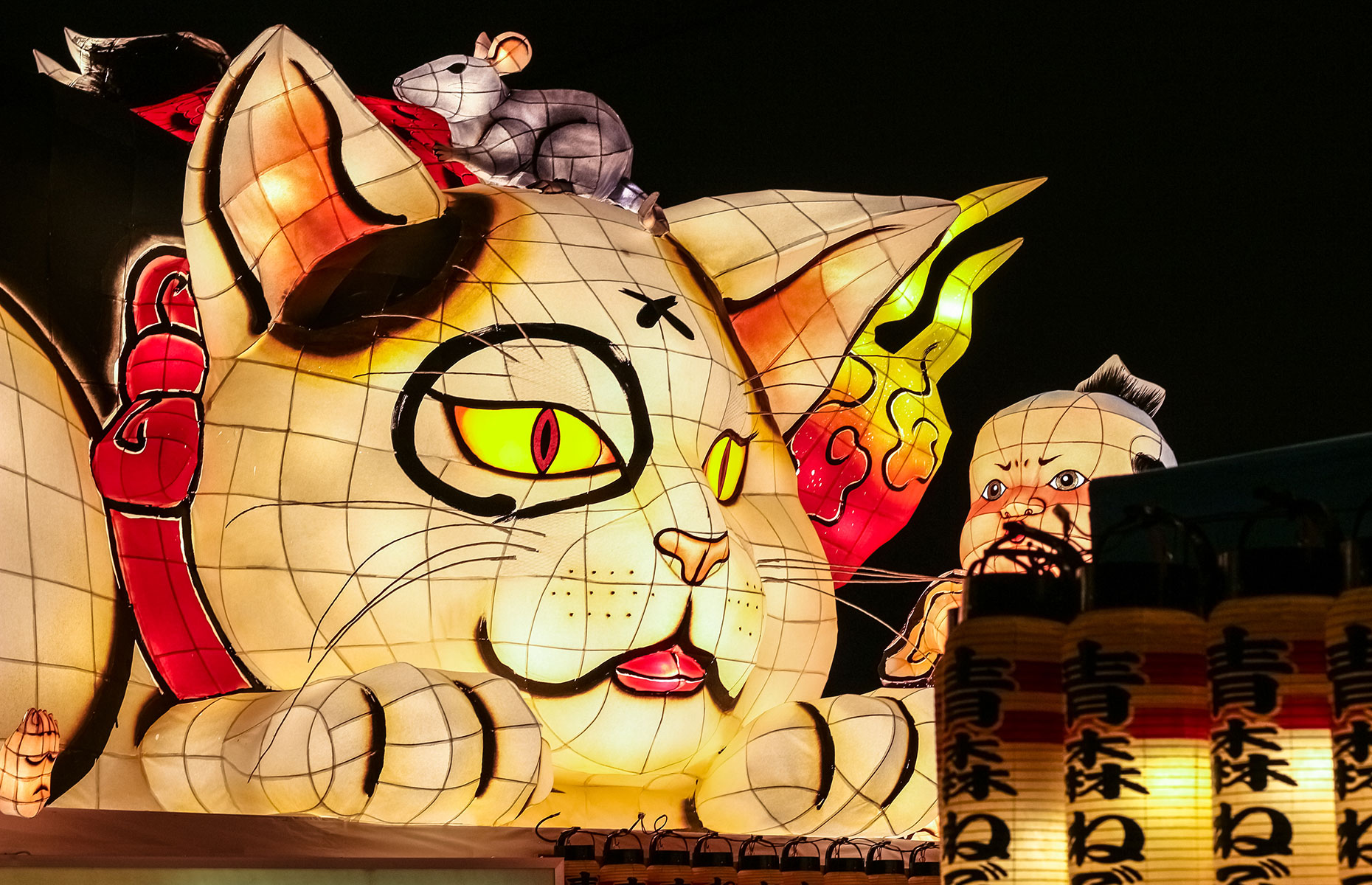 AKKHARAT JARUSILAWONG/Shutterstock
AKKHARAT JARUSILAWONG/Shutterstock
Straight after is Akita’s Kantō Matsuri, where participants carry tall, top-heavy bamboo poles, balancing them on their head, shoulder or hip in a show of balance and athleticism. Around the same time is the Hanagasa Matsuri in Yamagata, which features taiko drumming and traditionally costumed dancers.
The last major summer festival (mid-August) is Sendai’s Tanabata Matsuri. The town is decorated with paper lanterns to celebrate the annual reunion of Vega and Altair, and it culminates in a stunning firework display over the river.
3. It has some stunning temples
Hiraizumi was once a major religious centre, its extravagantly gilded Konjiki-dō giving a glimpse of its status a thousand years ago. Unlike Kyōto or Nara, it’s surprisingly rarely visited by tourists, giving you more time and space to admire the ancient sutra scrolls, mother-of-pearl altar decorations and manicured Heian garden at Mōtsū-ji.
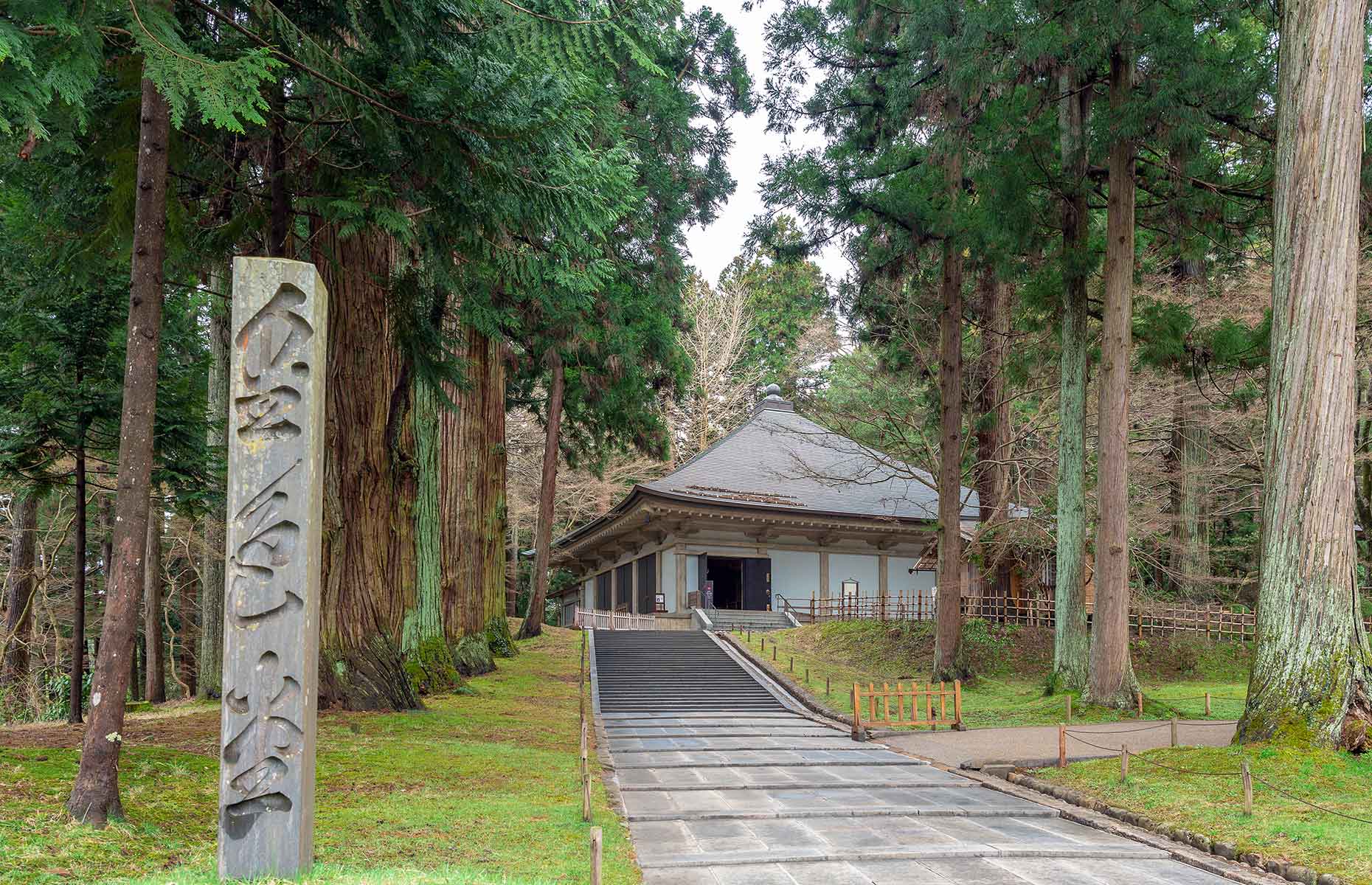 mTaira/Shutterstock
mTaira/Shutterstock
It’s also the perfect place to see traditional arts, with nō theatre performances held at the spring and autumn Fujiwara festivals (May and November), and the sacred Ennen-no-Mai dance performed each January, May and November.
Perhaps most rarefied of all is the picturesque poetry competition held in Mōtsū-ji in late May, where participants in Heian-era dress compose poems by the river as cups of sake are floated down to them on the water.
4. You can visit samurai strongholds
Hiraizumi is the exception to the rule that southern Honshū was the domain of the royal court and major religious foundations, while the wild north was controlled by powerful samurai families.
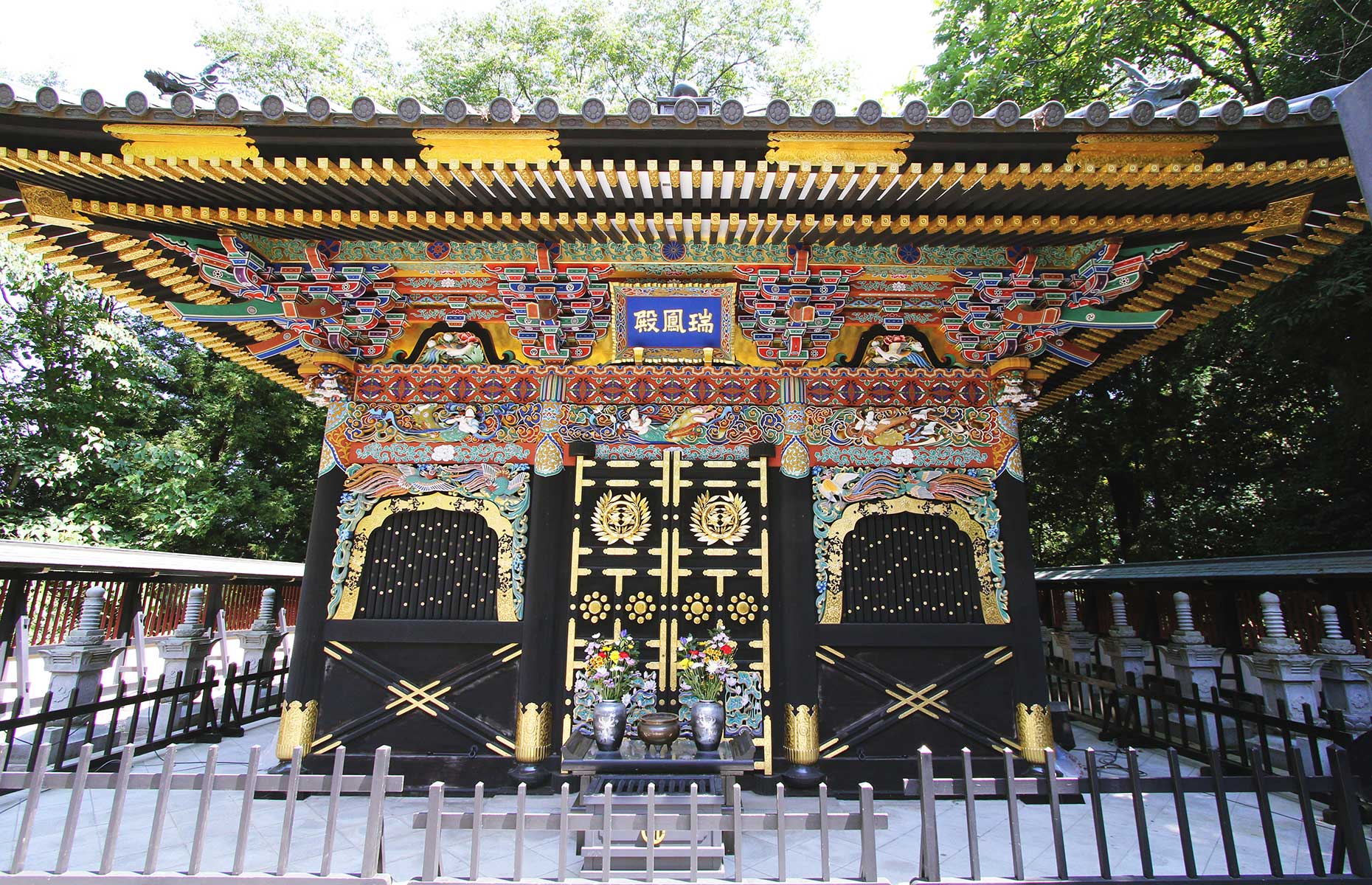 Courtesy of the Japan National Tourism Organization
Courtesy of the Japan National Tourism Organization
In Sendai, you can visit the opulent mausoleum of one-eyed warrior Date Masamune, (pictured above), one of Japan’s most famous daimyō (warlords), and a ruined castle. Alternatively, head to the town of Kakunodate, where you can see about 80 evocative, well-maintained samurai mansions. In springtime, hundreds of cherry blossom trees bloom along Kakunodate’s ancient streets and by the Hinokinai river.
5. There are buzzing cities with barely any tourists
Sendai’s appeal doesn’t only lie in its warrior past. Today it’s the region’s largest city, and it has a bustling downtown area with some excellent food (try the Ichiban-chō area).
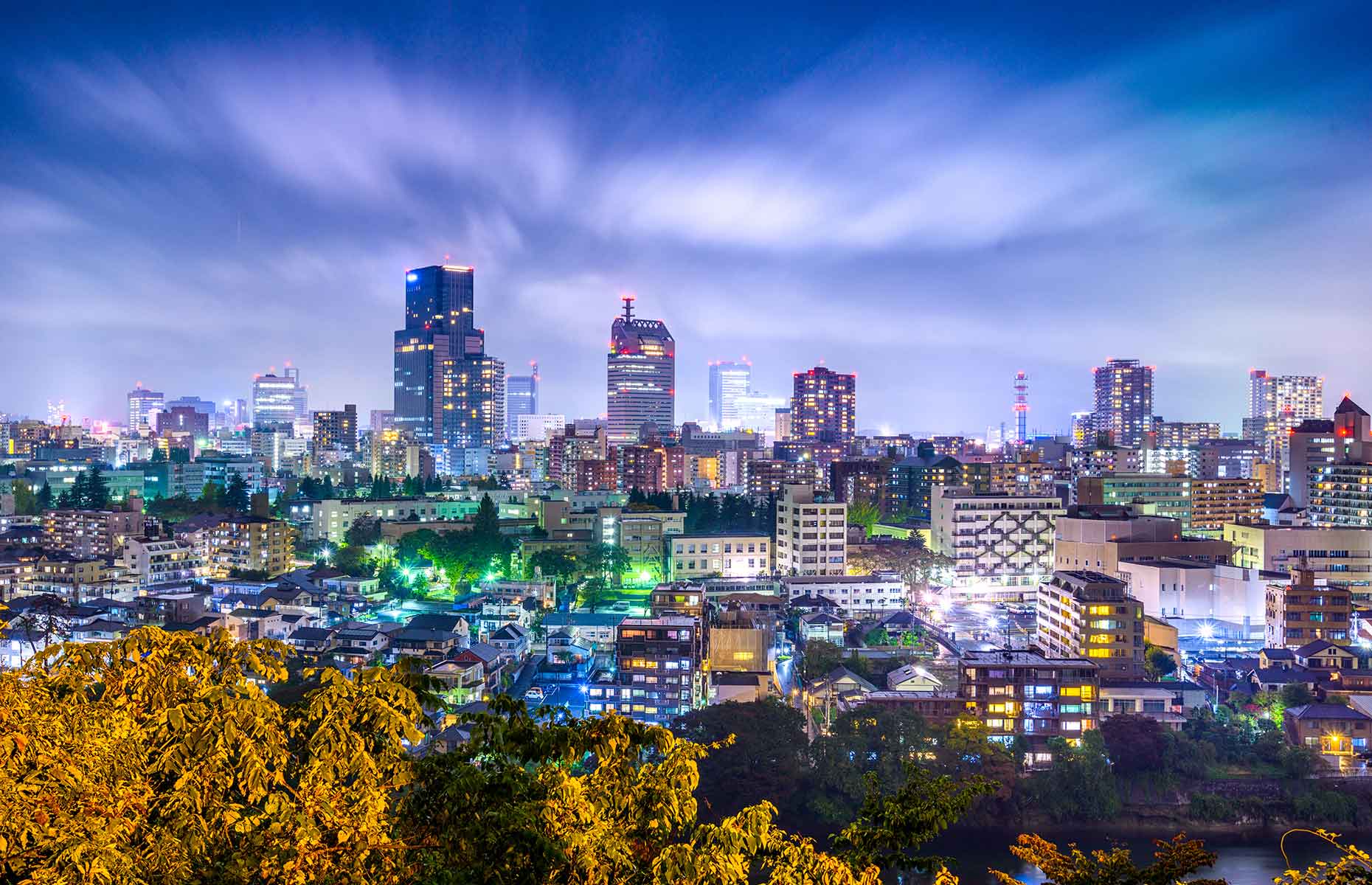 Sean Pavone/Shutterstock
Sean Pavone/Shutterstock
Morioka, further north, is a small and relaxed city in a plateau between mountains. Its main park contains some castle ruins, and it’s a great city to visit if you’d like to buy some artisan goods.
READ MORE: The best weekend trips from Tokyo
Furthest north of all is Aomori, which is a friendly and down-to-earth port city. Visit for its delicious fresh fish, lively waterfront and several excellent museums.
6. The landscapes are beautiful
From verdant Tōno Valley (ideal for cycling) to dramatic Geibikei and Genbikei gorges and the holy peaks of Dewa-sanzan, Tōhoku is home to some stunning landscapes. A homestay or farmstay is a great way to explore the countryside in more depth (WWOOF Japan is usually a good way to find one).
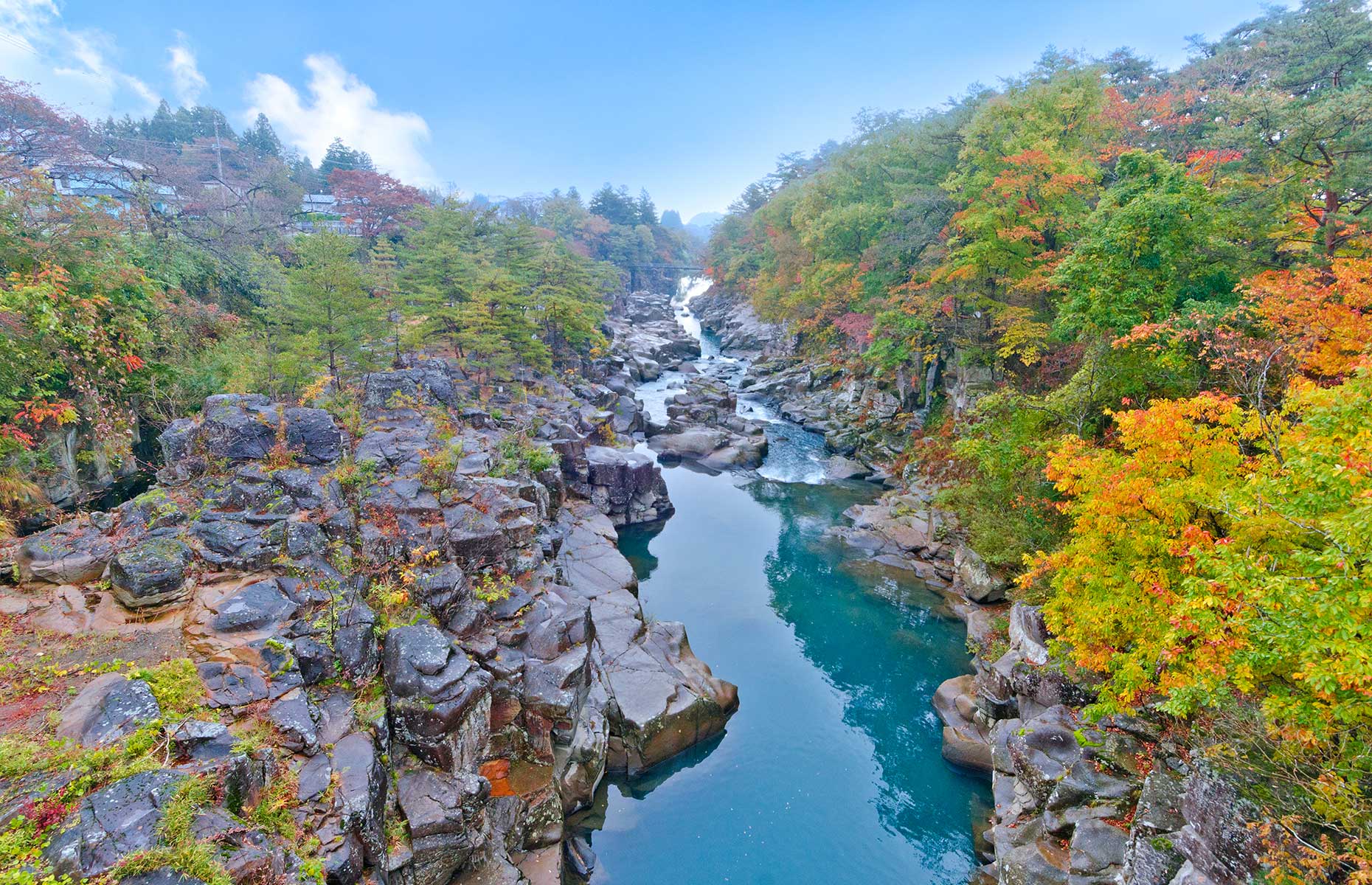 Thanya Jones/Shutterstock
Thanya Jones/Shutterstock
The coast, of course, brings even more glorious vistas. Matsushima’s island-studded bay is considered one of Japan’s three best views, while Oshika Hantō’s rugged coastline features some wonderfully remote hiking. In the far north, only 25 miles from Hokkaido, the Shimokita Hantō is home to the eerie landscapes of Mount Osore, where the souls of the dead are said to wander, and the intriguing rock formations of Hotokegaura.
7. There’s more delicious food than you could try in one trip
In Morioka, you can try the wanko soba challenge – eat as many small, innocent-looking bowls of soba noodles as possible before you finally tap out. In Matsushima, you’ll want to slurp down a few of their famed oysters, while in Aomori the local favourite is hotate kai yaki, or scallops with miso. If you like the idea of gyū-tan – calf’s tongue – Sendai is the place for you, or for a hearty kiritanpo, a stew made with chicken, vegetables and grilled mochi, make a beeline for Akita.
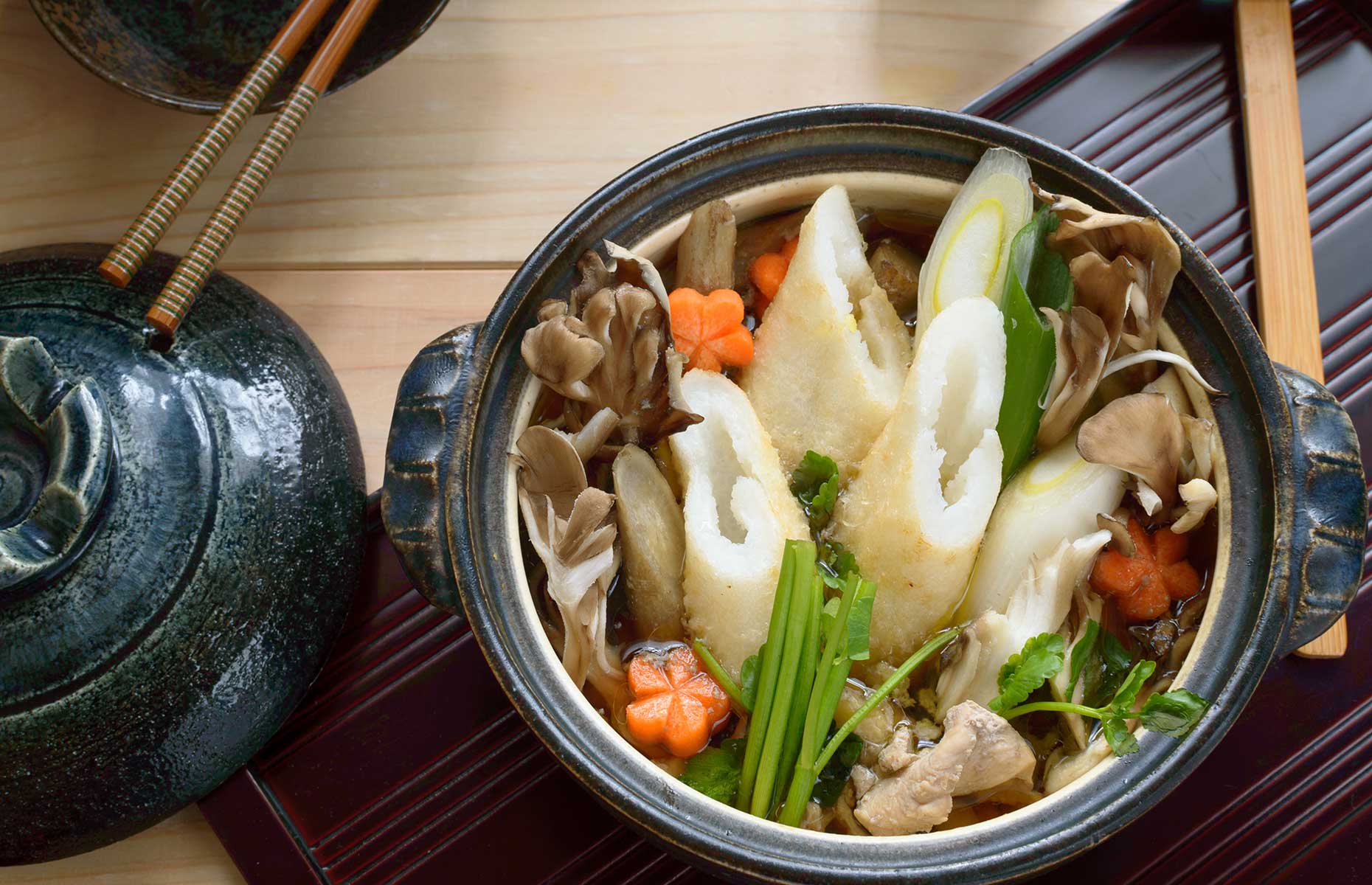 Tataya Kudo/Shutterstock
Tataya Kudo/Shutterstock
As with all of Japan, food is viewed with reverence in Tōhoku. Each region has its own speciality, from hearty stews to dainty confections, and your trip will only be improved by eating your way through all of them.
8. The winter scenery and snow festivals are unparalleled
In the deep north of Japan, winter can be harsh but beautiful. In Zaō Quasi National Park, the season creates a jaw-dropping sight: juhyō, or snow monsters. Under a very specific set of conditions, the trees here are covered in layers of snow and ice, forming dramatic shapes that can look like stooped figures, rearing monsters or frozen waves depending on your view.
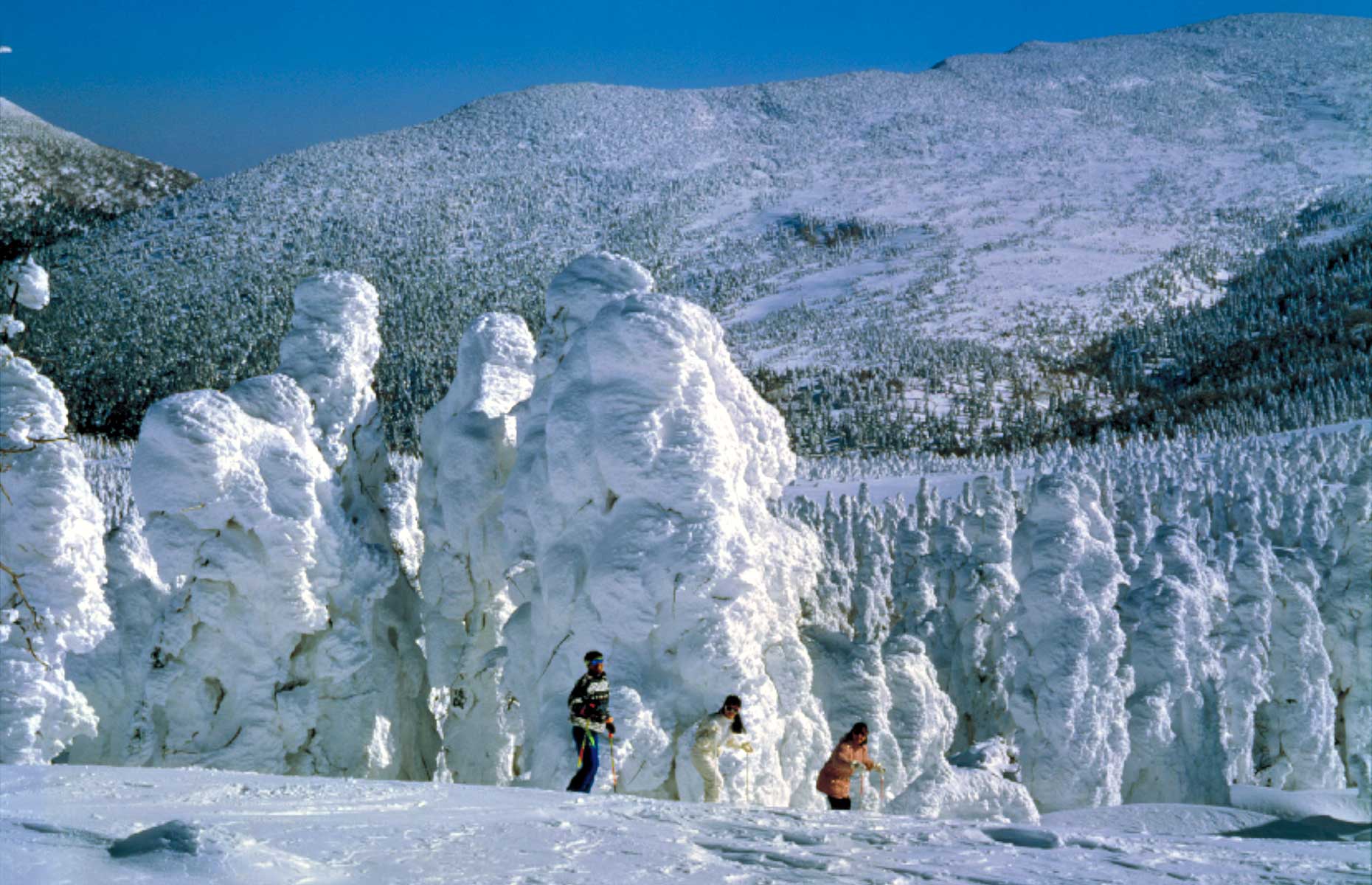 Courtesy of the Japan National Tourism Organization
Courtesy of the Japan National Tourism Organization
By February, coming out of the coldest month of the year, the calendar starts to fill up with festivals. In Yokote, the Kamakura Matsuri sees igloos built around town, tiny ones glittering with candles by the river; the same night, in Rokugō, two groups of men charge at each other with sharp bamboo poles in the Takeuchi Matsuri (the poles are set on fire for the third round, to make it extra dangerous). In Iwate, half-naked men compete for good luck at the Somin-sai Matsuri, while in Kaminoyama townspeople dress up in straw costumes and make bird noises for the Kasedori Matsuri, a light-hearted way to invite good fortune for the coming year.
9. You can help the ongoing recovery effort
For all its attractions, Tōhoku is still recovering from the 2011 earthquake, tsunami and nuclear disaster. Tens of thousands of people are still yet to be permanently rehoused, and though the affected area was only a small part of the prefecture, some areas like Fukushima are still struggling to increase tourism.
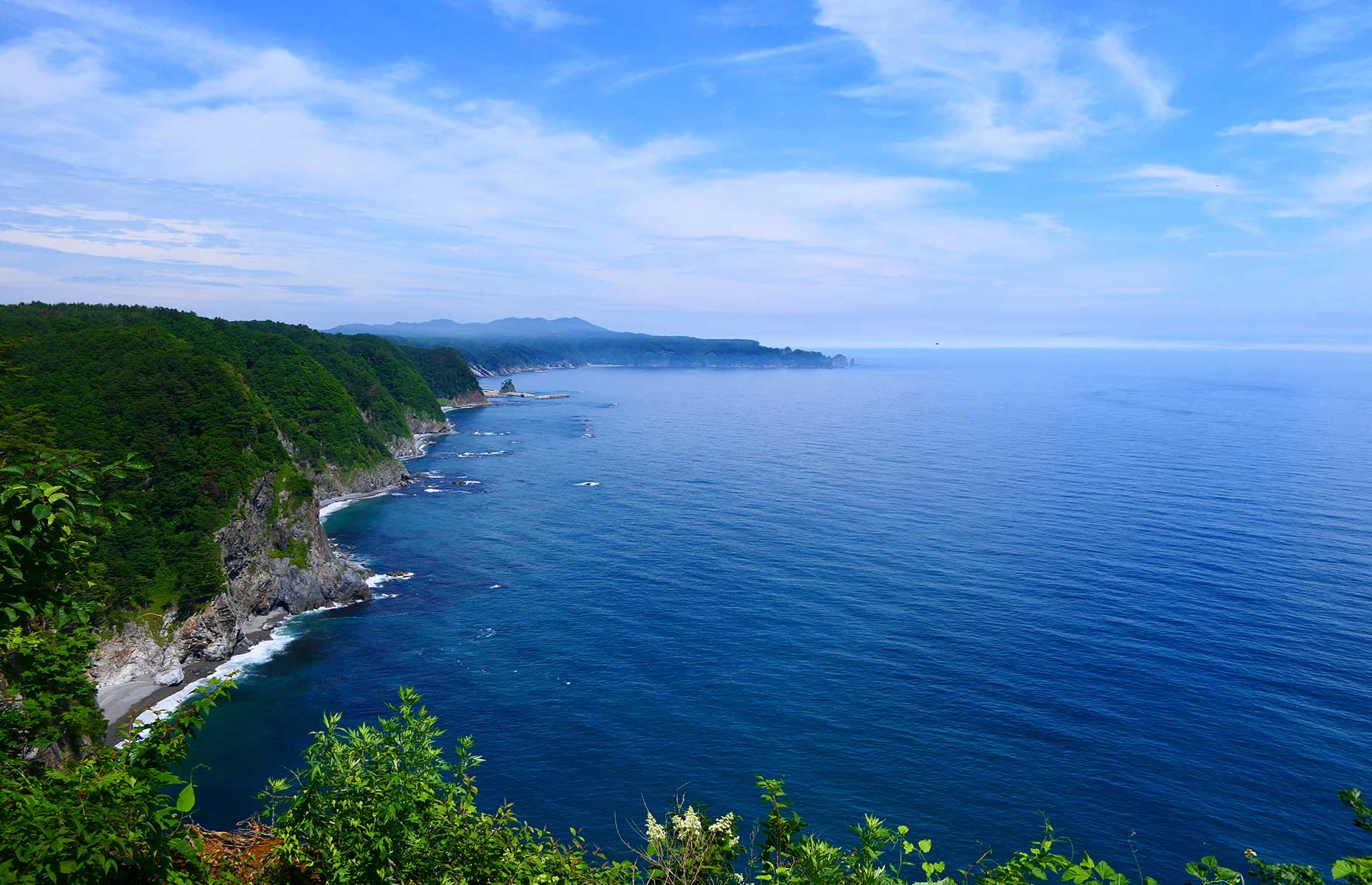 yoshimi maeda/Shutterstock
yoshimi maeda/Shutterstock
But there are signs of hope, and by visiting Tōhoku you can have a positive impact on the recovery effort. The Sanriku Recovery National Park is a great place to go if you’d like to find out more, as this diverse stretch of coastline – encompassing craggy coves, white-sand beaches and working fishing villages – was established to help people learn about the bounty of nature, but also its dangers. You can find out about disaster prevention efforts, take part in ecotourism initiatives, and walk the trails of this beautiful stretch of coastline.
Getting there
Air France offers flights to Tokyo via Paris Charles de Gaulle from nine departure points across the UK, connecting to three direct flights between Paris and Tokyo daily. Fares from London Heathrow start from £773 economy return including taxes and charges. See airfrance.co.uk or phone 0207 660 0337.
Map of key attractions in northern Japan
Comments
Do you want to comment on this article? You need to be signed in for this feature